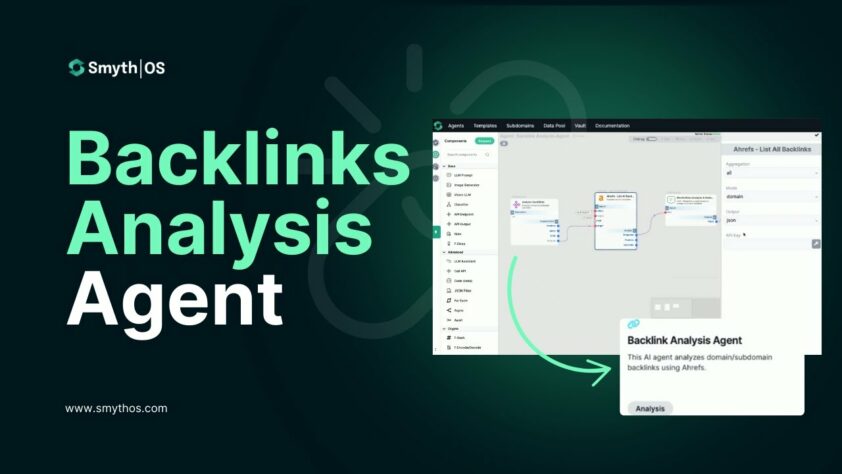Imagine your website as a bustling city, with backlinks serving as the roads connecting it to the vast digital landscape. Just as a well-planned road network can transform a sleepy town into a thriving metropolis, a robust backlink profile can catapult your website from obscurity to the forefront of search engine results.
In today’s fiercely competitive online environment, mastering the art of backlink analysis isn’t just beneficial—it’s essential. This comprehensive guide will walk you through the intricate process of conducting a thorough backlink analysis, equipping you with the tools and strategies to boost your website’s SEO performance and visibility.
Whether you’re a seasoned digital marketer or a website owner looking to improve your online presence, understanding and leveraging your backlink profile can be the key to unlocking unprecedented growth and authority in your niche.
The Power of Backlinks in SEO
Before we delve into the nitty-gritty of backlink analysis, it’s crucial to understand why backlinks matter so much in the realm of SEO. Search engines like Google view backlinks as votes of confidence from one website to another. The more high-quality, relevant backlinks your site has, the more authoritative and trustworthy it appears in the eyes of search algorithms.
However, not all backlinks are created equal. A single high-quality backlink from a reputable source can be worth more than dozens of low-quality links from obscure or irrelevant websites. This is where backlink analysis comes into play, helping you distinguish the gold from the pyrite in your link profile.
By conducting a thorough backlink analysis, you can identify opportunities to strengthen your link-building strategy, uncover potential issues that might be holding your site back, and gain valuable insights into your competitors’ tactics. It’s like having a roadmap to SEO success, guiding you towards improved visibility and higher rankings in search results.
What are the steps involved in performing a backlink analysis?


Backlink analysis is a crucial component of any comprehensive SEO strategy. By examining the links pointing to your website, you can gain valuable insights into your site’s authority, relevance, and overall health in the eyes of search engines. Let’s dive into the key steps involved in conducting an effective backlink analysis.
1. Identify All Your Backlinks
The first step in any backlink analysis is to gather a complete picture of your link profile. This involves using powerful tools like Ahrefs, SEMrush, or Google Search Console to compile a comprehensive list of all the websites linking to yours.
These tools crawl the web and provide detailed reports on your backlinks, giving you a solid foundation for your analysis. It’s important to use multiple tools if possible, as each may have slightly different data sets.
2. Analyze the Follow/Nofollow Link Ratio
Once you have your backlink data, it’s time to examine the ratio of follow to nofollow links. Follow links pass link equity and are generally more valuable for SEO, while nofollow links don’t pass equity but can still drive traffic and add credibility.
A healthy link profile typically has a mix of both types. If you find your profile heavily skewed towards one type, it may indicate an unnatural link building pattern that could raise red flags with search engines.
3. Examine the Total Links to Linking Domains Ratio
Next, look at the ratio of total backlinks to unique linking domains. This metric gives you insight into the diversity of your link profile. A high number of links from a small number of domains can indicate an unnatural link pattern or over-reliance on a few sources.
Ideally, you want a diverse range of high-quality websites linking to yours. This diversity signals to search engines that your content is valuable and worthy of reference across various platforms.
4. Analyze the Domain Ratings of Your Backlinks
Domain Rating (DR) is a metric used by tools like Ahrefs to measure the overall strength of a website’s backlink profile. Analyzing the DR of your backlinks helps you understand the authority of the sites linking to you.
While high DR backlinks are generally more valuable, a natural link profile will have a mix of high and low DR links. Focus on acquiring links from sites with higher DR, but don’t discount lower DR sites if they’re relevant and can drive targeted traffic.
5. Check Link Relevance and Context
The relevance of your backlinks is crucial for SEO. Search engines value links from websites that are topically related to yours. Examine the context in which your links appear – are they within content that’s relevant to your industry or niche?
Look for opportunities to acquire more contextually relevant backlinks. These not only boost your SEO but also drive more targeted traffic to your site.
6. Manually Group Links by Type
Categorizing your backlinks helps you understand the composition of your link profile. Common categories include guest posts, directory listings, social media mentions, and editorial links. This manual grouping process can reveal patterns and opportunities in your link building strategy.
For instance, if you find that most of your high-quality links come from guest posts, you might want to focus more on this tactic. Conversely, if you notice an over-reliance on low-quality directory listings, it might be time to diversify your approach.
7. Analyze Anchor Text Diversity and Relevance
The anchor text of your backlinks can significantly impact your search engine rankings. A natural link profile will have a diverse range of anchor texts, including branded terms, URLs, generic phrases, and relevant keywords.
Be wary of over-optimization – too many backlinks with exact-match keyword anchor text can look suspicious to search engines. Aim for a natural distribution that aligns with your brand and target keywords without appearing manipulative.
| Metric | Description |
|---|---|
| Total Backlinks | The total number of links pointing to a website. |
| Referring Domains | The number of unique domains linking to a website. |
| Domain Authority | A score that predicts a website’s ability to rank on search engines. |
| Dofollow/Nofollow Ratio | The proportion of links that pass SEO value versus those that do not. |
| Anchor Text Diversity | Variety in the text used in hyperlinks pointing to a website. |
By following these steps and regularly conducting backlink analyses, you can maintain a healthy link profile, identify new link-building opportunities, and stay ahead of potential issues that could harm your SEO efforts. Remember, backlink analysis is an ongoing process – the digital landscape is always evolving, and so should your link-building strategy.
What are the best tools for backlink analysis?


Backlink analysis is a crucial aspect of SEO, and several powerful tools are available to help you dive deep into your website’s link profile. Let’s explore some of the top contenders in this space and how they stack up against each other.
SEMrush stands out as a comprehensive solution for backlink analysis. With its vast database of over 43 trillion backlinks, it offers unparalleled insights into your link profile. SEMrush’s Backlink Analytics tool provides detailed information on referring domains, anchor text distribution, and even helps identify toxic links that could harm your site’s reputation.
Ahrefs is another heavyweight in the backlink analysis arena. Known for its robust crawler and frequent index updates, Ahrefs excels in discovering new and lost backlinks quickly. Its user-friendly interface and advanced filtering options make it a favorite among SEO professionals looking for in-depth link data.
Moz, while offering a slightly smaller backlink database, brings unique value with its Domain Authority metric. This score helps gauge the overall strength of a website’s backlink profile. Moz’s Link Explorer tool is particularly useful for those just starting with backlink analysis, thanks to its intuitive design and straightforward reports.
Comparing the Top Tools
When it comes to feature-rich backlink analysis, SEMrush often edges out the competition. Its Link Building Tool not only helps you find new link opportunities but also streamlines the outreach process. This integrated approach can save considerable time and effort in your link-building campaigns.
Ahrefs, on the other hand, shines in its ability to provide historical data on backlinks. This feature is invaluable for understanding the evolution of your link profile over time and identifying patterns in your competitors’ link-building strategies.
Moz, while not as comprehensive as SEMrush or Ahrefs in terms of raw data, offers a more beginner-friendly experience. Its spam score feature is particularly helpful for identifying potentially harmful links, making it easier to maintain a clean backlink profile.
Choosing the Right Tool for You
The ideal backlink analysis tool depends on your specific needs and budget. For enterprise-level analysis and comprehensive digital marketing insights, SEMrush is often the top choice. Its all-in-one platform approach provides value beyond just backlink analysis.
If your focus is primarily on backlinks and you need the most up-to-date data, Ahrefs might be your best bet. Its powerful crawler and frequent updates make it indispensable for SEO professionals who need to stay on top of their link profile changes.
For smaller businesses or those new to SEO, Moz offers a great entry point. Its more affordable plans and user-friendly interface make it accessible, while still providing valuable insights into your backlink profile.
Beyond Traditional Tools: AI-Powered Solutions
AI-powered platforms are starting to make waves in SEO and digital marketing. SmythOS, for instance, is emerging as a comprehensive solution for managing complex AI workflows. While not a traditional backlink analysis tool, its allows users integrate various data sources and automate complex processes. Furthermore, you can use tools like SEMrush or Ahrefs via API and select a foundational model to handle the decision making process.
The future of backlink analysis may well lie in such AI-driven platforms that can not only analyze links but also provide actionable insights and automate various aspects of SEO strategy. As the digital landscape continues to evolve, keeping an eye on these innovative solutions could give you an edge in your SEO efforts.
In conclusion, while SEMrush, Ahrefs, and Moz lead the pack in backlink analysis tools, each offers unique strengths. Consider your priorities – whether it’s comprehensive data, user-friendliness, or advanced features – and choose the tool that best supports your SEO goals. And don’t forget to keep an eye on emerging AI-powered solutions that could revolutionize how we approach backlink analysis in the future.
How can backlink analysis inform your SEO strategy?


At its core, backlink analysis is about understanding the digital ecosystem your website inhabits. It’s not just about counting links; it’s about dissecting the quality, relevance, and authority of the sites linking to you. This process can reveal surprising patterns and opportunities that might otherwise remain hidden.
One of the primary benefits of conducting thorough backlink analysis is the identification of new link-building opportunities. By examining the backlink profiles of your competitors, you can discover potential partners or platforms that are already receptive to content in your niche. This strategic approach to link prospecting can save you countless hours of outreach and significantly increase your success rate in acquiring high-quality backlinks.
Competitive Edge Through Comparative Analysis
Backlink analysis isn’t just about your own site; it’s also a window into your competitors’ strategies. By comparing your backlink profile with those of your rivals, you can identify gaps in your link-building efforts and areas where you’re falling behind. This competitive intelligence is invaluable for refining your SEO strategy and staying one step ahead in the digital race.
Moreover, this comparative approach can reveal industry trends and best practices. You might discover innovative content formats or partnership strategies that are working well in your sector, allowing you to adapt and improve your own tactics.
Monitoring Credibility and Authority
Perhaps one of the most exciting aspects of backlink analysis is the ability to track when reputable sites link to your content. These high-authority backlinks are like gold in the SEO world, significantly boosting your site’s credibility in the eyes of search engines.
By keeping a close watch on new backlinks, you can quickly capitalize on these opportunities. For instance, if a respected industry blog links to one of your articles, you could reach out to deepen the relationship or create follow-up content to maximize the impact of that authoritative link.
Regular backlink analysis and refinement are crucial for maintaining and improving your search engine visibility. The SEO landscape is constantly shifting, with algorithm updates and changing competitor strategies. By consistently evaluating your backlink profile, you can ensure that your SEO strategy remains effective and competitive.
This continuous improvement process allows you to identify and disavow toxic links that might harm your rankings, while simultaneously focusing your efforts on acquiring links that will have the most significant positive impact on your search engine performance.
Enhancing Overall SEO Strategy
Ultimately, the insights gained from backlink analysis should inform your broader SEO strategy. By understanding which types of content attract the most high-quality links, you can refine your content creation process. If certain topics or formats consistently earn backlinks from authoritative sources, this knowledge can guide your editorial calendar and content marketing efforts.
Furthermore, backlink analysis can highlight opportunities for internal linking improvements. By identifying your most linked-to pages, you can ensure that these high-value assets are prominently featured within your site’s architecture, spreading their SEO benefit throughout your domain.
In conclusion, backlink analysis is an indispensable tool for any serious SEO practitioner. It provides a data-driven foundation for decision-making, allowing you to allocate resources effectively and focus on strategies with the highest potential return. By making backlink analysis a cornerstone of your SEO efforts, you position your website for sustained growth and visibility in the competitive digital landscape.
Conclusion


Backlink analysis stands as a cornerstone of any successful SEO campaign, offering invaluable insights into your website’s performance and authority. By mastering the art of backlink analysis and leveraging the right tools, you unlock the potential to dramatically improve your site’s visibility and search engine rankings. Regular backlink audits aren’t just recommended—they’re essential for maintaining a robust and healthy link profile in today’s competitive digital landscape.
But let’s face it: the world of SEO is just one piece of the larger digital puzzle. As businesses increasingly rely on AI to drive innovation and efficiency, the need for robust management systems becomes paramount. Enter SmythOS, a game-changing platform that’s revolutionizing how companies integrate AI into their operations.
Much like how backlink analysis provides structure and insight to your SEO efforts, SmythOS offers the framework needed to effectively manage AI agents and workflows. Its data lake architecture enables continuous learning, while flexible deployment options ensure AI can be seamlessly integrated across various touchpoints. The result? A powerhouse system that maximizes the impact of your AI initiatives.
In an era where AI is no longer a futuristic concept but a present-day necessity, platforms like SmythOS aren’t just nice to have—they’re critical for long-term success. By providing the necessary structure and control, SmythOS empowers businesses to harness the full potential of AI, driving innovation and maintaining a competitive edge in an increasingly AI-driven world.
